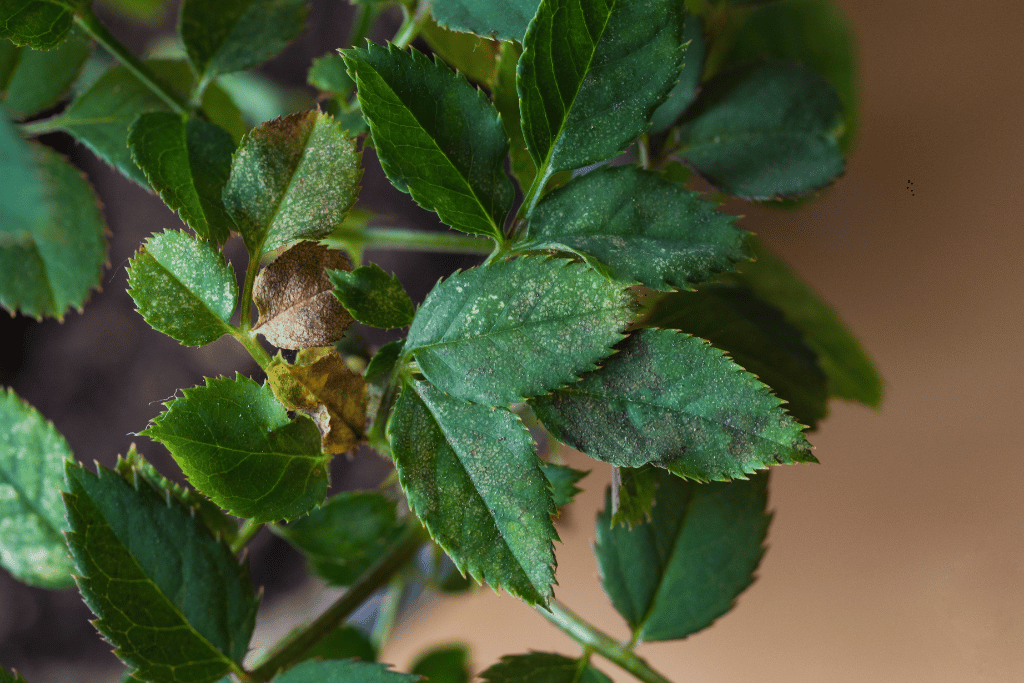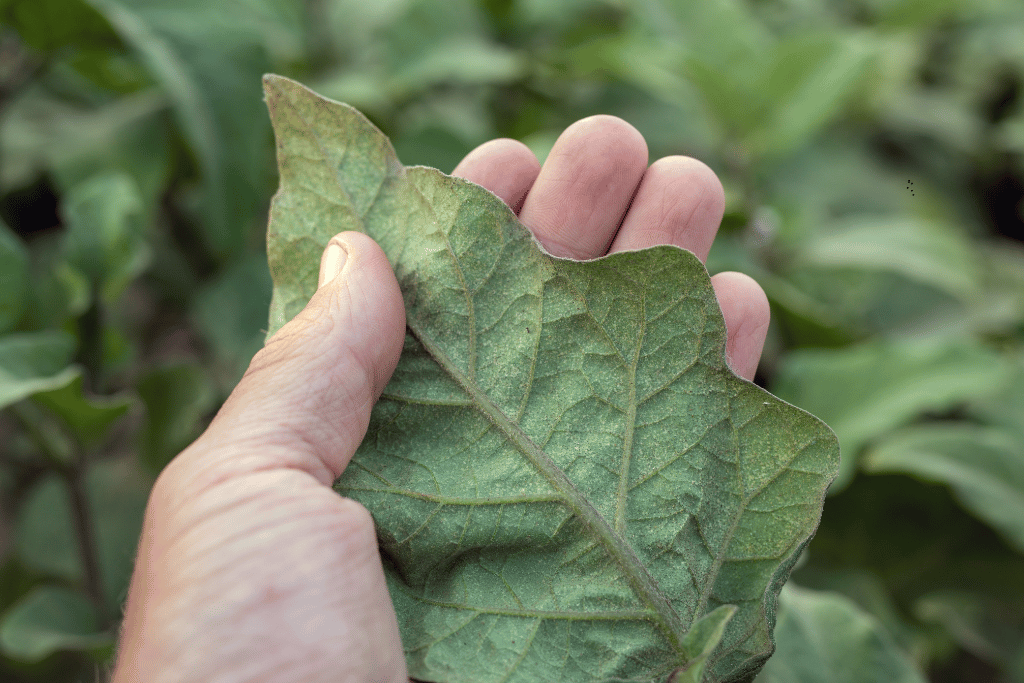
It starts with a subtle change in your plant’s appearance—a slight dulling of the leaves or a faint discoloration you can’t quite explain. You may brush it off as nothing, but this could be the first sign of spider mites making themselves at home. These tiny pests thrive in warm, dry conditions and can silently wreak havoc on your plants before you realize what’s happening. By the time the damage is obvious, your plant may already be struggling to recover.
Spider mites are incredibly small, about 1/50 of an inch, and they’re nearly invisible without a closer look. These tiny arachnids are more closely related to spiders than insects and can reproduce at an alarming rate, with a single female laying hundreds of eggs in her short lifespan. Spotting these pests early is essential for preventing widespread damage and saving your plants. Here’s how to spot early signs of spider mites and act before it’s too late.
Early Signs of Spider Mites
1. Fine Webbing on Leaves and Stems
One of the earliest and most obvious signs of spider mites is the presence of fine, silky webbing on plants. This webbing often appears on the underside of leaves, between stems, or near the plant’s growing points. It’s easy to overlook at first glance, as the webbing can be sparse in the early stages. However, as the infestation grows, so does the amount of webbing.
What to Look For:
- Thin, almost transparent threads on the underside of leaves.
- Sticky residue on your hands if you touch the plant.
- Webbing becoming denser in clusters, especially near heavily infested areas.
2. Speckled or Stippled Leaves
Spider mites feed by puncturing plant cells and sucking out their contents. This feeding method leaves behind small, light-colored dots known as stippling. Over time, the leaves may take on a speckled appearance that’s easy to mistake for nutrient deficiencies or environmental stress.
What to Watch Out For:
- Tiny yellow or white spots forming across the leaf surface.
- A loss of the leaf’s vibrant green color.
- Stippled patterns that spread across multiple leaves.
3. Yellowing and Drooping Leaves
As spider mites continue to feed, the damage they cause can lead to chlorosis—a condition where leaves lose their green pigment. This causes yellowing, and as the infestation progresses, affected leaves may begin to curl, droop, or fall off entirely.
Key Indicators:
- Leaves turning yellow in uneven patches.
- Drooping foliage despite proper watering.
- A general decline in the plant’s health and vigor.
4. Visible Mites on the Underside of Leaves
While spider mites are tiny, they are visible under close inspection. Using a magnifying glass or simply looking closely at the underside of leaves can help confirm their presence. These mites may appear as moving dots, often reddish-brown, yellow, or green, depending on the species.
Steps to Spot Them:
- Hold a white sheet of paper under a leaf and gently tap it.
- Examine the paper for small moving specks—these are likely spider mites.
- Use a magnifying glass to inspect the underside of leaves for clusters of mites or eggs.
5. Plant Stress and Reduced Growth
Infested plants often display slower growth or appear generally stressed. This is because spider mites sap the plant’s energy by damaging its cells, reducing its ability to photosynthesize. New growth may become stunted, and blooms may fail to open or fall prematurely.
Symptoms of Stress:
- Stunted or misshapen new growth.
- Wilting even with adequate watering.
- A general lack of vitality in the plant’s appearance.
6. Browning or Burnt-Looking Leaves
If left untreated, the damage from spider mites can cause leaves to turn brown, dry out, and die. This stage indicates a severe infestation and often leads to irreversible damage. The “burnt” appearance is a result of extensive cell destruction.
How to Confirm Spider Mites
Sometimes, early signs of spider mites can mimic other issues like fungal infections, nutrient deficiencies, or overwatering. To confirm an infestation:
Inspect Closely:
Examine the plant’s leaves, especially the underside, for fine, silky webbing. Look closely for tiny, moving dots, which could be the spider mites, and clusters of small, spherical, translucent eggs. Early detection here can make all the difference.
Conduct a Shake Test:
Hold a white sheet of paper under a plant’s leaves and gently tap them. If spider mites are present, you’ll see small, moving specks on the paper. This simple test helps confirm their presence quickly.
Use a Magnifying Tool:
Spider mites are tiny and hard to spot with the naked eye. Use a magnifying glass or a smartphone with a zoom feature to closely inspect the leaves for movement, webbing, and the mites themselves. This method provides a clear visual confirmation.
Spider Mite Damage

Spider mites can cause extensive damage to plants, impacting their health and appearance. Their feeding method—puncturing plant cells to suck out sap—weakens the plant over time. The severity of the damage depends on the size of the infestation and how long it has gone unnoticed.
Types of Damage:
- Leaf discoloration: Yellow or white stippling on leaves, progressing to full yellowing or browning.
- Webbing: Thick webbing that covers leaves and stems in severe cases.
- Wilting: Leaves lose their turgor, droop, and may fall prematurely.
- Stunted growth: The plant’s overall growth slows down, and new growth becomes weak or malformed.
- Death of plant parts: Severely damaged leaves and stems may dry out and die, leading to significant aesthetic and functional losses.
Spider mites also reduce a plant’s ability to photosynthesize, leading to long-term decline if the infestation isn’t addressed promptly.
How to Get Rid of Spider Mites
If you’ve confirmed the presence of spider mites, taking action immediately is key. Multiple methods can help eliminate these pests, ranging from natural remedies to chemical solutions.
Natural Methods:
- Water spray: Use a strong jet of water to knock spider mites off the plant. Pay special attention to the underside of leaves.
- Insecticidal soap: Apply a soap solution specifically formulated for pests. This suffocates spider mites without harming the plant.
- Neem oil: This natural oil disrupts the life cycle of spider mites and prevents them from reproducing.
- Introduce predators: Beneficial insects like ladybugs, lacewings, or predatory mites can help control spider mite populations.
Chemical Methods:
- Use miticides or pesticides labeled for spider mite control. These are effective but should be used sparingly to avoid harming beneficial insects.
- Rotate products to prevent resistance, as spider mites can adapt to repeated use of the same chemical.
How to Prevent Spider Mites
Prevention is always better than dealing with an infestation. A combination of good plant care practices and environmental control can help keep spider mites at bay.
Tips for Prevention:
- Regular inspections: Check plants weekly for signs of mites, especially during dry or warm weather.
- Maintain humidity: Spider mites thrive in dry conditions, so increase humidity around your plants using misting or a humidifier.
- Dust regularly: Dust on leaves creates an ideal environment for spider mites. Clean leaves with a damp cloth or gently rinse them with water.
- Quarantine new plants: Keep newly purchased plants isolated for a few weeks to ensure they’re pest-free before introducing them to your garden or indoor space.
- Use resistant plants: Some plant varieties are less attractive to spider mites. Consider incorporating these into your collection.
By staying vigilant and proactive, you can protect your plants from the damage spider mites cause. Implementing these practices will ensure your garden or indoor space remains a healthy, thriving environment.
Conclusion:
Spider mites may be small, but their impact on plants can be devastating. Early signs of spider mites like webbing, stippled leaves, and yellowing foliage are key indicators of their presence. Spotting these pests early and using natural or chemical remedies can prevent extensive damage. Understanding their appearance and the damage they cause ensures swift action.
Prevention is your best defense. Regular plant inspections, maintaining humidity, and proper plant care are essential. By staying vigilant and proactive, you can protect your plants and keep them thriving, free from the destructive effects of spider mites.



